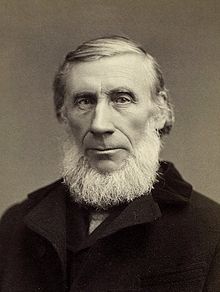In 1854, John Tyndall, a British physicist, demonstrated that light could travel through a curved stream of water thereby. He proved this by setting up a tank of water with a pipe that ran out of one side. As water flowed from the pipe, he shone a light into the tank into the stream of water. As the water fell, an arc of light followed the water down. He proved that light signals could be bent.

Heinrich Lamm was the first person to transmit an image through a bundle of optical fibers in 1930.
In 1973, Bell Laboratories developed a modified chemical vapor deposition process that heats chemical vapors and oxygen to form ultra-transparent glass that can be mass-produced into low-loss optical fiber. This process still remains the standard for fiber-optic cable manufacturing.
In the late 1970s and early 1980s, telephone companies began to use fibers extensively to rebuild their communications infrastructure.
Sprint was founded on the first nationwide, 100 percent digital, fiber-optic network in the mid-1980s.
 The first all-optic fiber cable, TPC-5, that uses optical amplifiers was laid across the Pacific Ocean in 1996.
The first all-optic fiber cable, TPC-5, that uses optical amplifiers was laid across the Pacific Ocean in 1996.Today, a variety of industries including the medical, military, telecommunication, industrial, data storage, networking, and broadcast industries are able to apply and use fiber optic technology in a variety of applications.
Sources : http://www.timbercon.com/history-of-fiber-optics/
http://www.sff.net/people/jeff.hecht/history.html

No comments:
Post a Comment